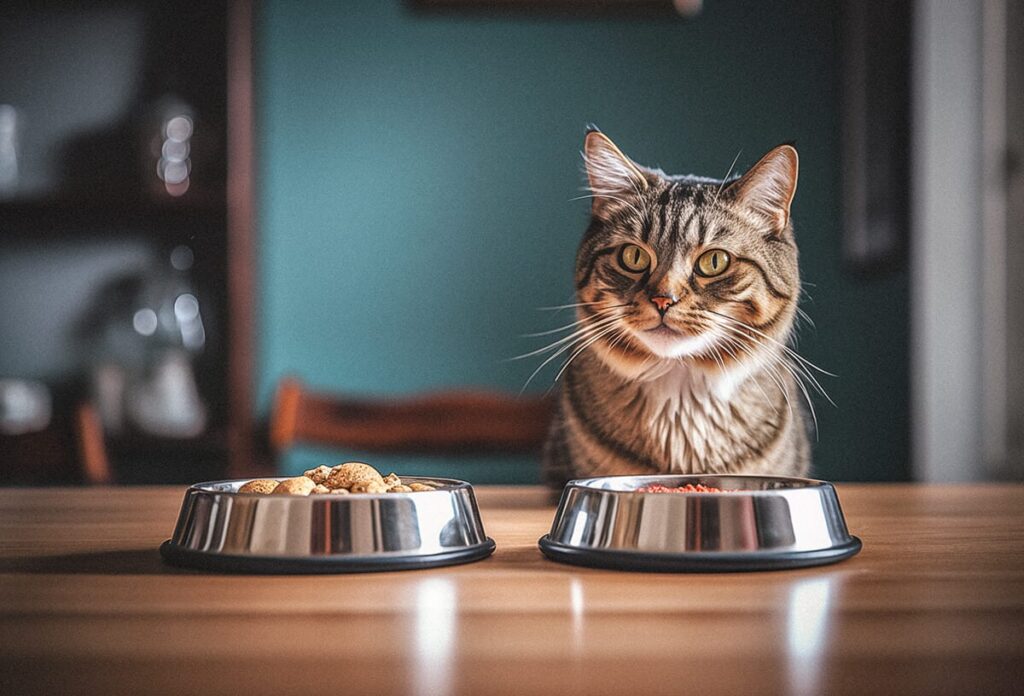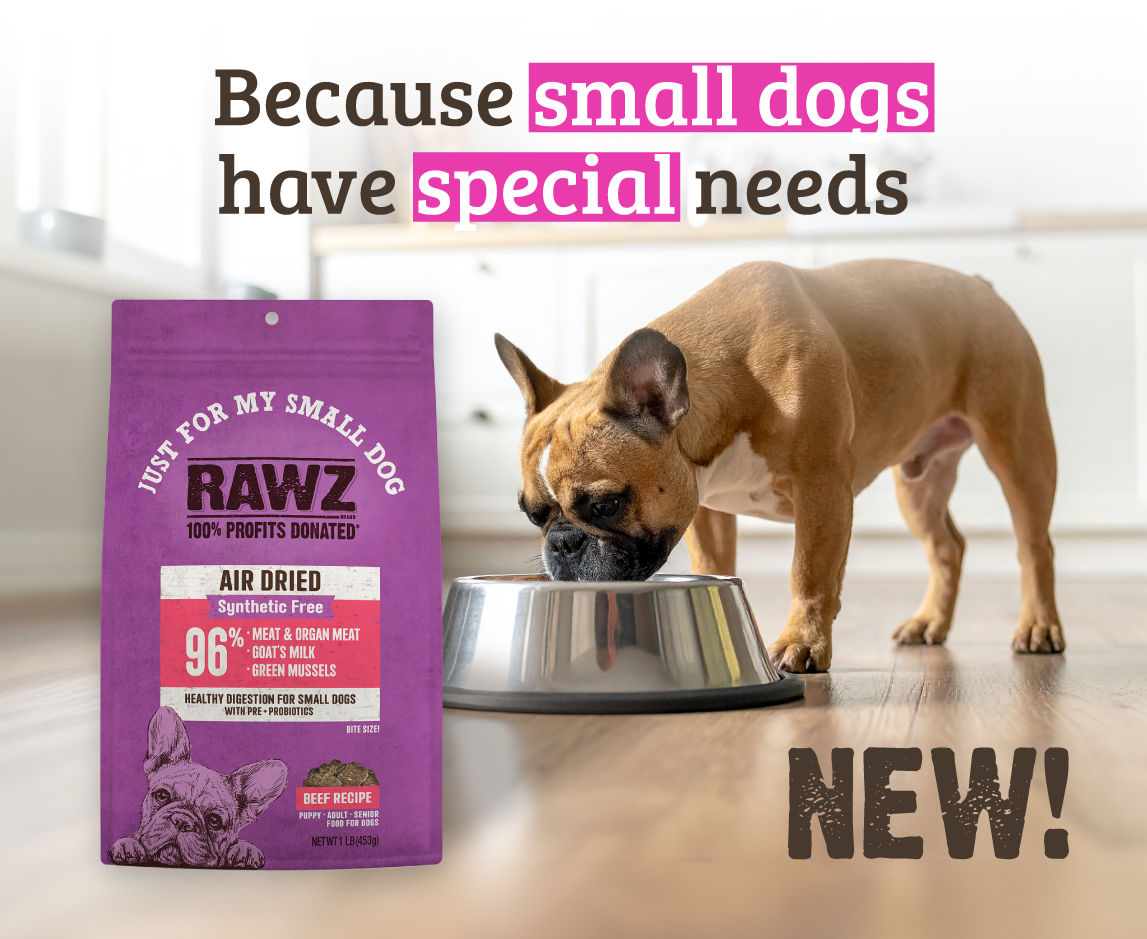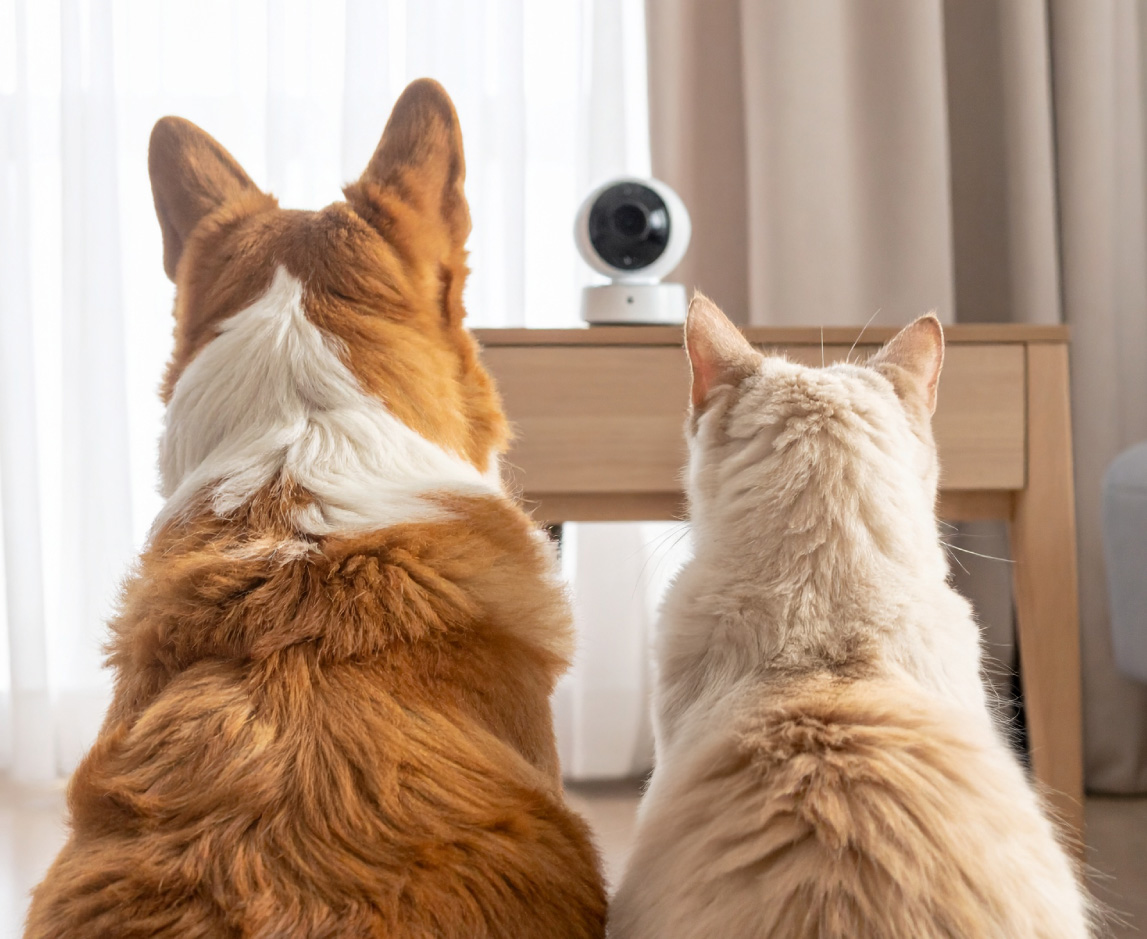If you’re a cat owner, you’ve probably asked yourself this question: Is wet or dry food better for cats? It’s an age-old debate with sound arguments on both sides. Wet food advocates will bring up hydration benefits for cats that don’t consume enough water. Dry food, on the other hand, is more cost effective.
We don’t want to jump to the answer too soon, but the truth is, the dry vs. wet cat food debate comes down to individual pets and their specific needs. Keep reading to learn more about making the best choice possible with expert advice and insights into each option.
Wet vs. Dry
Cat Food: Key Differences
As expected, the primary difference between wet and dry cat food is the moisture content. The maximum percentage of moisture in the product is required to be noted on pet food labels. Though water content will vary depending on the brand, most canned pet food contains about 80% water and dry food about 10%.
As you may have already assumed, the texture or consistency of wet and dry food are distinctly different. The best option for your pet will depend on the cat's digestive system and palate preferences.
Before serving anything to your pet, it’s important to know if the product is nutritionally complete and balanced for the cat’s life stage. You can determine this by checking the AAFCO’s Nutritional Adequacy Statement, located near the guaranteed analysis on pet food labeling.
Want to learn more about reading pet food labels? Check out our complete guide >>
Pros of Wet Food
Though the modern cat has evolved from wild, desert dwelling felines, their thirst drives are naturally low. That makes sense to many cat parents who are familiar with the difficulty of encouraging proper hydration. Whether by water bowls that simulate a running spring, a cat bubbler (as New Englanders say) or incorporating broth into dry food, the quest to encourage moisture consumption is almost never-ending.
Fortunately, the high palatability of wet food and recipes of varied texture often work well with finicky cats.
There are also perks for cats with dental issues that can limit their ability to chew food, reducing nutrient absorption and even the desire to eat. Wet recipes solve that problem.
Cons of Wet Food
The cost of wet food is a concern for many people, especially when it’s all a cat eats. Prices vary by brand, quality and packaging size, but wet cat foods with premium ingredients will be noticeably more expensive than lower-quality options.
Another aspect to consider is that wet food typically needs to be consumed within an hour after opening because it dries out quickly. Of course, as we all know, our feline companions can turn their nose up at food for any number of reasons — even when the same can is taken back out of the refrigerator, where it may have slightly dried or taken on a new texture.
Pros of Dry Food
There’s no doubt about there being major convenience in scooping ready-to-eat, easily portioned kibble. Not only is it convenient, but it has a long shelf life if stored in a cool, dry place. Dry food is often regarded as the most economical choice when it comes to daily feeding.
The question of whether dry food contributes to feline oral health is very much ongoing; the main argument being that there’s not enough friction for most dry food to remove any tartar from a cat’s teeth.
Cons of Dry Food
The word “dry” is a hint at perhaps the biggest concern: Hydration. Felines have evolved from desert cats, but they still have low thirst drives that can lead to problems. Many cats benefit from diets containing more moisture than is contained in dry food. Along with a lack of moisture, dry food needs to contain starch to keep its shape/form, possibly leading to higher carbohydrate levels.
The higher carbohydrates in dry food can lead to obesity and contribute to the epidemic of diabetes in our feline companions. The tendency of overfeeding, particularly when the free-feeding method is used, can also cause excess weight and seems more common with dry food due to the fact that it’s frequently left out for a cat to eat at will.
Should you Feed your Cat Wet Food or Dry Food?
The bottom line when it comes to cat nutrition is finding a consistent way to give your feline the proper nutrition to meet its nutritional needs. And let’s not forget a challenge — a feline who’s hesitant to eat, period. The answer here may not be as simple as wet or dry, but rather whatever combination most appeals to your cat and delivers vital nutrition to ensure their health.
Consider as well whether the cost and convenience of a given food will fit into your time and budgetary constraints.
Your veterinarian’s input is also incredibly important. Always check with a professional before changing your cat’s diet.
FAQs
Is wet food better for cats?
It would seem that our picky felines, notorious for their low thirst drives, may be hesitant to eat wet recipes. However, as many cat parents will attest, cats often approach wet food as a treat, eagerly lapping up any remaining liquid. So why this seeming paradox? Some cats who are particularly picky eaters experience diminished senses of taste and/or smell, and may find the concentrated flavor of wet foods extremely appetizing.
Does dry cat food make cats gain more weight?
The answer to this question will change on a case-by-case basis, depending on the brand and your cat’s eating habits. Dry food is also often left out in large quantities for cats to eat at their leisure. Be sure to monitor portion size, caloric density and nutritional value of anything you are feeding your pet.
What is the best food for cats?
Minimally processed food is best. That’s why at RAWZ, we use only dehydrated chicken as our natural, concentrated protein source. It has a higher protein efficiency ratio than rendered meals, and is gently cooked at much lower temperatures to retain protein and amino acids.
Looking to feed your pet the RAWZ way? We partner with independent retailers to distribute our products across the country.





